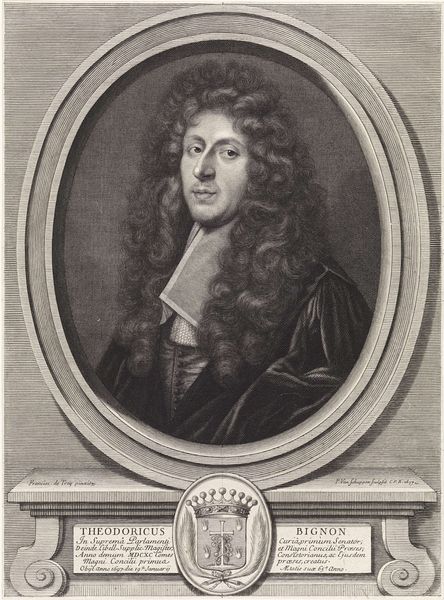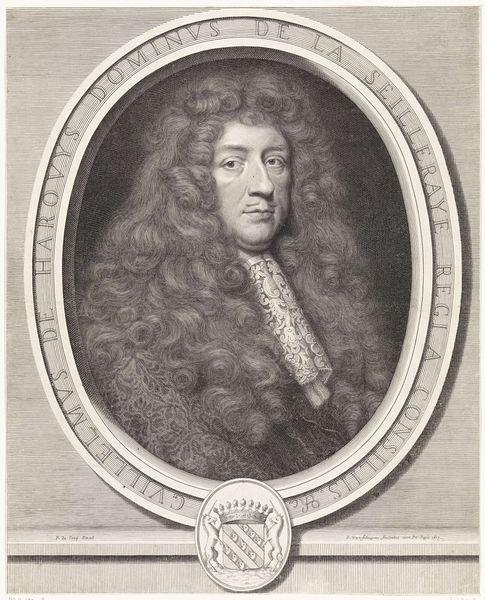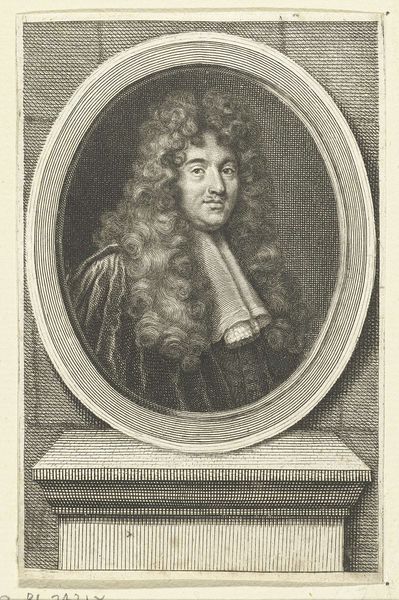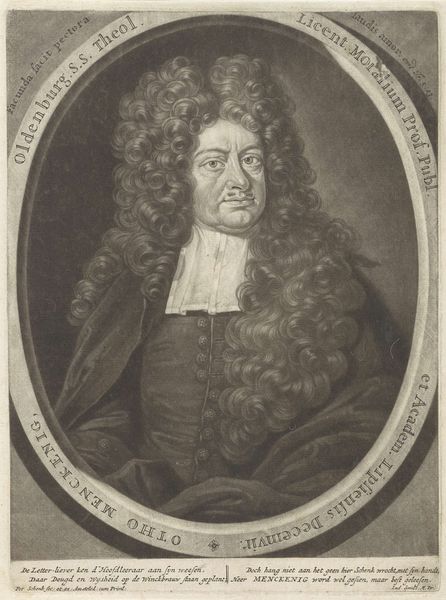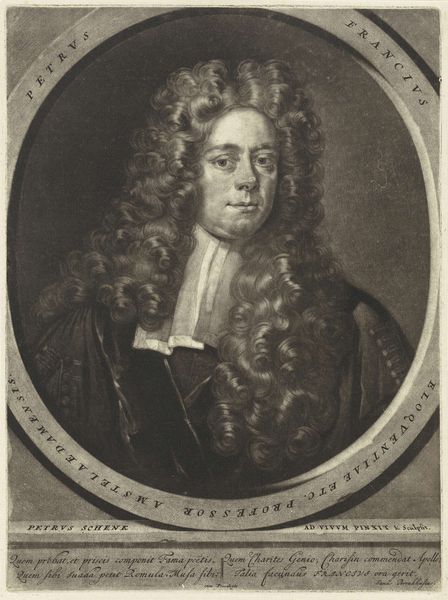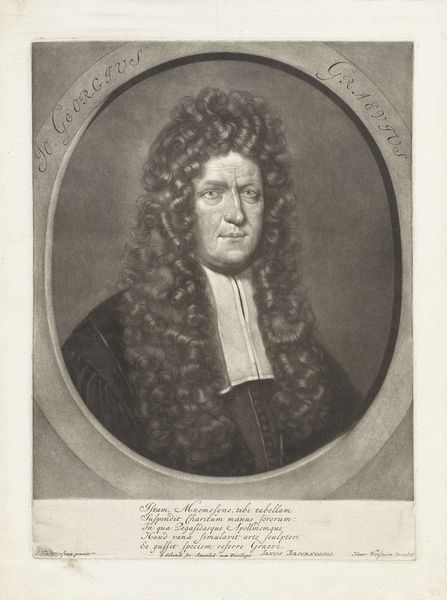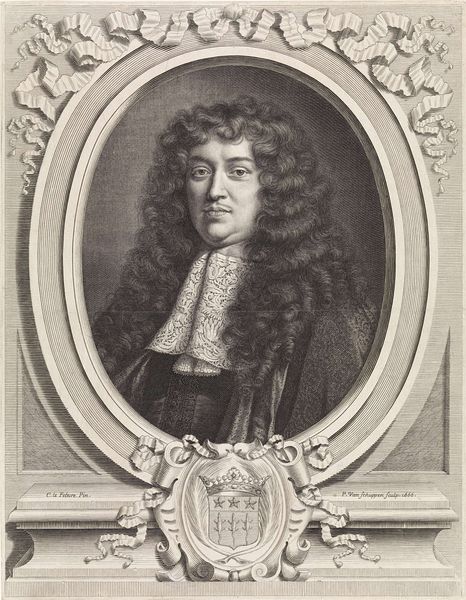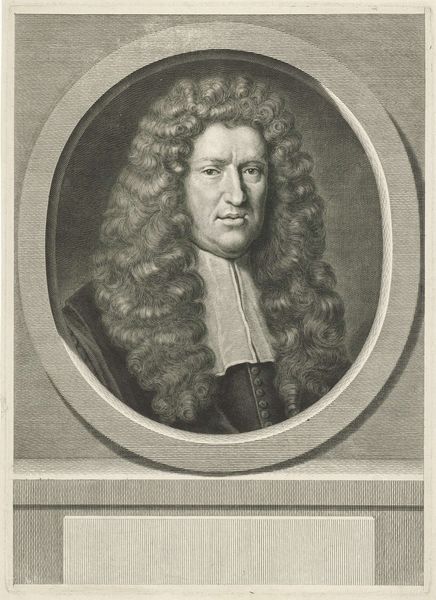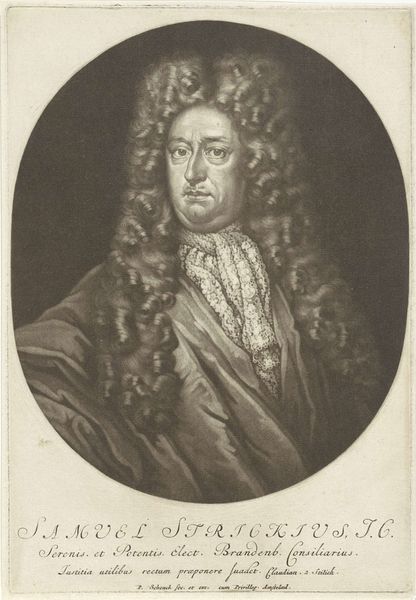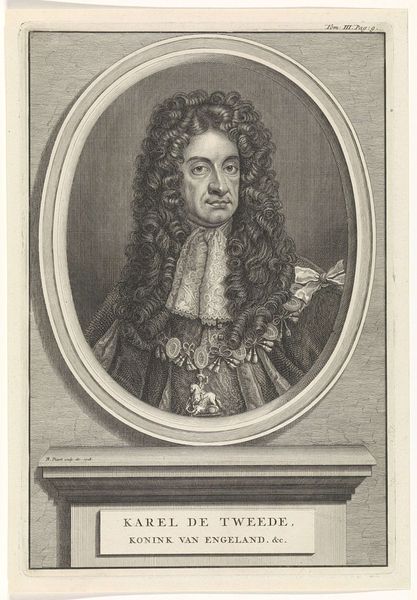
print, paper, engraving
#
portrait
#
baroque
# print
#
charcoal drawing
#
paper
#
form
#
pencil drawing
#
framed image
#
line
#
engraving
#
realism
Dimensions: height 249 mm, width 184 mm
Copyright: Rijks Museum: Open Domain
Editor: Here we have Pieter Schenk's "Portret van Lucas Schröck," an engraving on paper, dating between 1670 and 1713. The first thing that jumps out at me is the sheer volume of that wig. What's your take? Curator: Oh, the wig is a statement, isn’t it? Think of it as a halo, almost. Not necessarily divine, but certainly signalling status, intellect, importance… Lucas Schröck, judging by the text around the portrait, was a man of considerable accomplishments - physician, member of academies... He literally wears his status on his head, a mountain of luxurious artifice. Schenk, though, subtly suggests a human beneath it all with those eyes, don’t you think? What do they say to you? Editor: They seem... knowing, maybe a little tired. Like he's seen a thing or two. The whole thing is so Baroque, so performative, yet that gaze grounds it. Does the framing device—that faux stone oval—play into that at all? Curator: Absolutely! That trompe l'oeil oval, complete with inscribed phrases, is like a window onto Schröck’s world of learning and prestige. Schenk wants us to see him in the round, as it were—not just as a face but as a figure within a specific intellectual and social context. The detail in the rendering—the texture of the velvet, the intricate lace—it all contributes to that. Even that almost casual droop of the wig. You know, what do you make of that, the tension between that formality and what seems like a casual disarray? Editor: Maybe it’s meant to convey a sense of natural genius? Like, “I'm so brilliant, I don't even have to try to be perfect"? Curator: Perhaps. Or it is how portraiture creates and expresses personae that were designed to be legible in specific ways. An excellent observation; this dance between rigid expectations and something more individualized is precisely what makes these portraits so captivating. I certainly appreciate my looking, thanks! Editor: Definitely, it's fascinating to see how much information can be packed into a single image, and how the artist directs our reading of it. Thanks for making me see a familiar period in a new way!
Comments
No comments
Be the first to comment and join the conversation on the ultimate creative platform.
